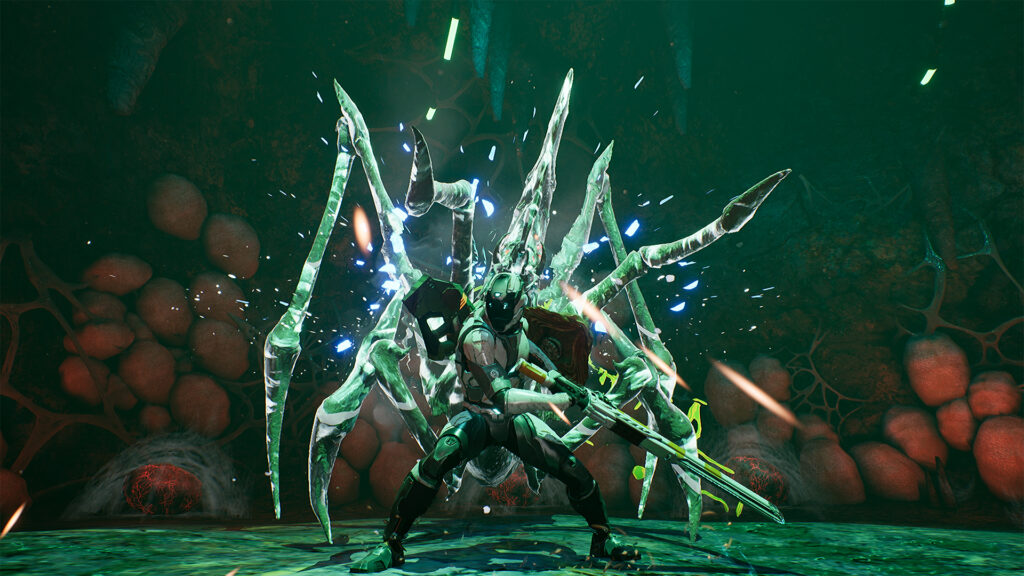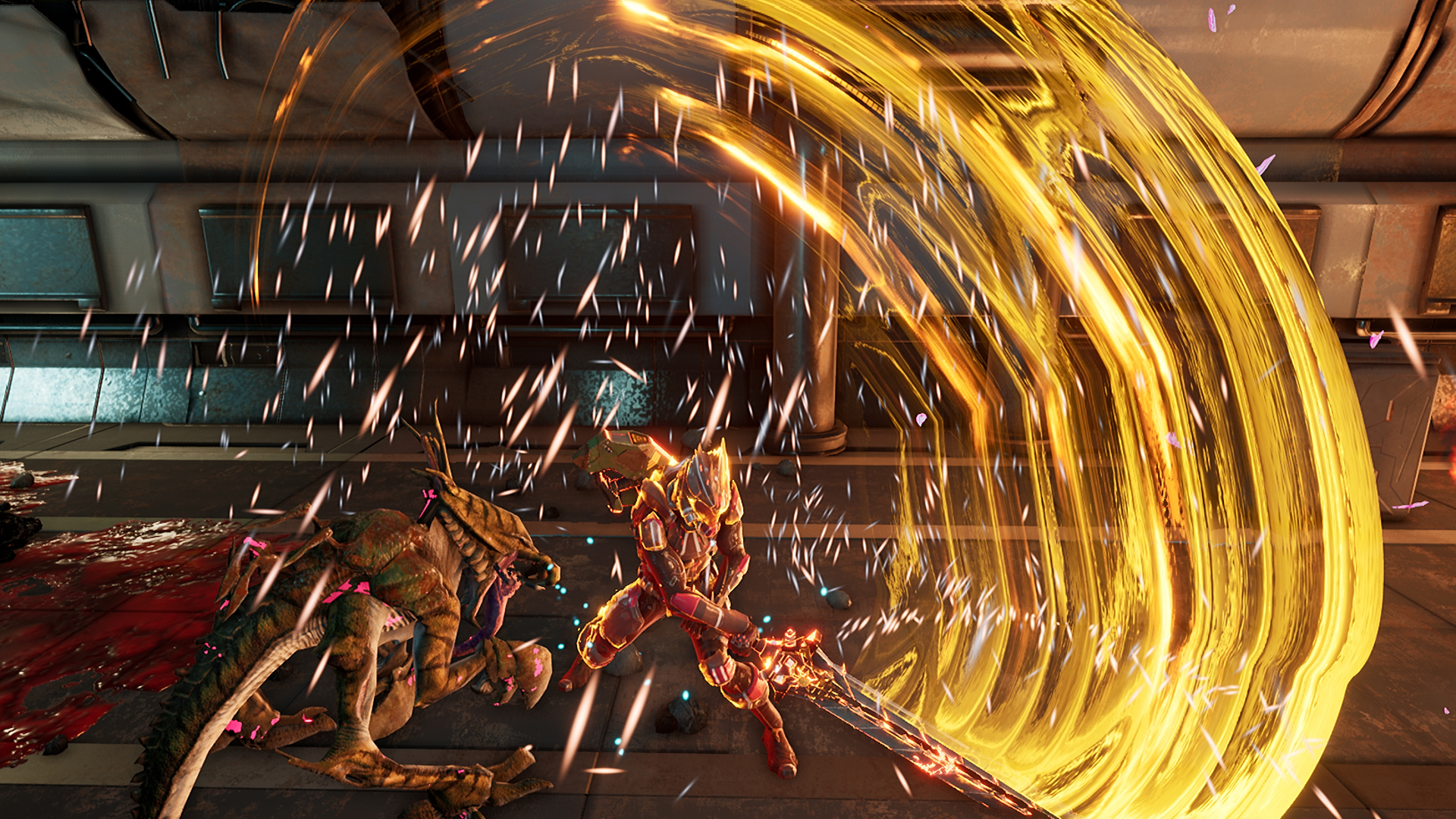Dolmen is sometimes needlessly difficult, even for a Souls-like game. Yes, there are other missteps along the way. But there's also a fair amount to like in here, and a couple of interesting ideas. With a little more time, the team behind this one should be putting out some really interesting work. And wouldn't you like to be able to say that you used to play their earlier stuff, before they got famous?
-
Visuals
-
Gameplay
-
Replayability
-
Story
-
Variety
From our very first moment with Dolmen, this space-based action RPG in the vein of Dark Souls, we knew what sort of game we were dealing with. The game’s menu gave pretty much the whole thing away. On loading up this game on the Xbox One, the menu can only be navigated with the D-pad. The Xbox One’s thumbsticks don’t do anything. The same goes for the menu in-game.
It seems like a small thing, but it’s a pretty big deal. Dolmen has ambitions of being the space version of Dark Souls. Or The Surge, a game it resembles a little more closely. But it was developed by Massive Work Studio, a Brazilian outfit. They’re, unfortunately, a little inexperienced, and it shows.
The darkest timeline
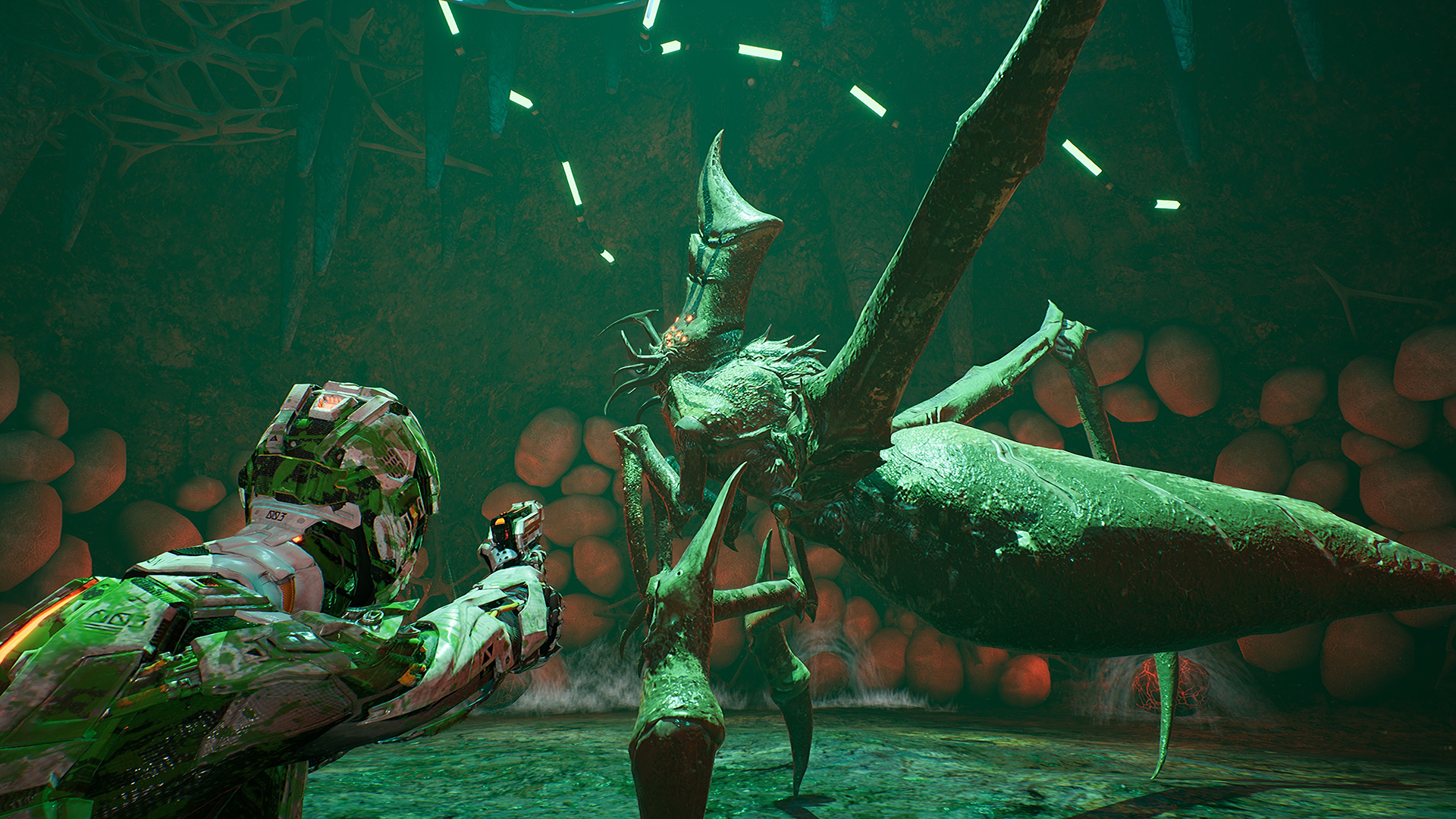 The plot for the game is fairly simple and mostly familiar. A space mining colony has found a strange substance with potential. But something’s gone wrong and it’s up to the player to head down to this place, called Revion Prime, and bring back some Dolmen. Because reasons. And because it allows for communications with other dimensions.
The plot for the game is fairly simple and mostly familiar. A space mining colony has found a strange substance with potential. But something’s gone wrong and it’s up to the player to head down to this place, called Revion Prime, and bring back some Dolmen. Because reasons. And because it allows for communications with other dimensions.
This setup could apply to Doom 3, Dead Space, or to the original shenanigans by the Weyland Yutani Corporation in the Alien films. It’s a touch generic, but that’s also fine. So is just about everything else in this fairly punishing RPG.
After you’re given the basics of the world you’re about to be dropped into, the story is mostly told via little screens dotted around the landscape. Log entries and mission updates (theirs, not yours) are told in various ways, but it’s all via text once you stand next to the relevant bit and hit the ‘Interact’ button. The story is a little more obviously told this way, but there’s far less of the mute storytelling Dark Souls is capable of.
Clone wars
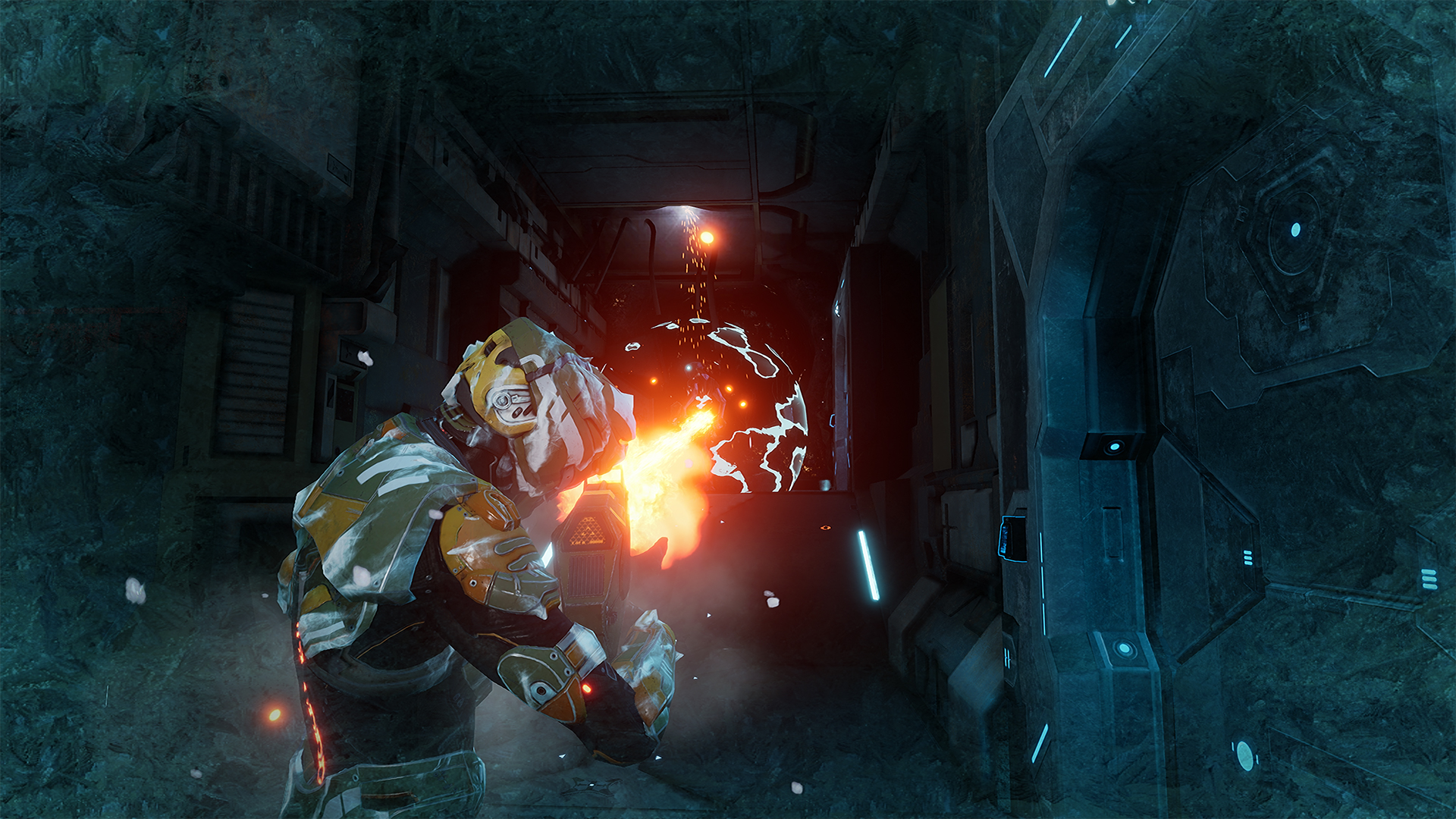 If you told us that Dolmen was a total-conversion mod for the original Dark Souls, we’d almost entirely believe it. Combat is basically identical. So is most of the control, except you can’t jump, for some reason. There are a few unique systems to set this one apart, but your Dark Souls muscle memory should work just fine.
If you told us that Dolmen was a total-conversion mod for the original Dark Souls, we’d almost entirely believe it. Combat is basically identical. So is most of the control, except you can’t jump, for some reason. There are a few unique systems to set this one apart, but your Dark Souls muscle memory should work just fine.
Dark Souls is a perfect example of how to imbue life into a character and setting that aren’t ever explained. The landscape and battles tell part of the story. The few voiced characters offer hints about what happened and what’s coming. Even boss fights and item descriptions feed into the understated narrative that players fill in from their side. Dolmen, unfortunately, doesn’t have much like this in its favour.
Dark Souls offers players options, right from the start. You want to brave the graveyard? Go for it. You might even get somewhere. But Dolmen offers, at best, the illusion of choice. Mostly, it offers convoluted but still linear corridors. There’s little room for creative play. You either defeat everything in front of you, or you stay right where you are. It’s still possible to open shortcuts, once milestones are reached, but few offer any alternatives to a particularly nasty foe.
Pros and cons
Let’s just get the slamming over with so we can get onto the good stuff. Dolmen‘s world doesn’t feel abandoned, it just feels empty. The inventory system relies way too heavily on RNG for upgrades, and it’s considerably more limited than it should be. Levelling your character feels entirely like filling in a spreadsheet. It’s great to have a longer health, endurance, and energy bar, but that’s as far as it goes. And there’s little weight behind the weapons, so it feels like you’re attacking enemies with a styrofoam bat. Enemy variety is also limited, aside from the boss encounters.
But there are a few things that Dolmen does well. There’s obvious care behind the creation of the game world. Demolish one of the earlier enemies with a melee attack and see how the green ichor covers your character’s armour. The (discount) shriek and melting of another enemy type sees a collection of bones clatter to the ground. There are numerous touches all over the place. They’re brilliant to see, but they’re not enough to offset what Dolmen is missing.
Also worth checking out is the energy system. Players have a blue energy bar, which is maintained by batteries. It’s like Dark Souls‘ Estus flask system, except you don’t only use it to heal. The blue bar tops up your health. But if it’s full, it’s used for ranged attacks and also to power your generator. These deplete the bar but don’t consume it the way health does. In other words, it’ll refill if you can escape combat for a bit. The generator (which can be changed) enables elemental attacks when activated — and each enemy type has at least one elemental weakness. It’s temporary, but it doesn’t consume your endurance bar either. There’s some potential for tactical play here.
Distant friends
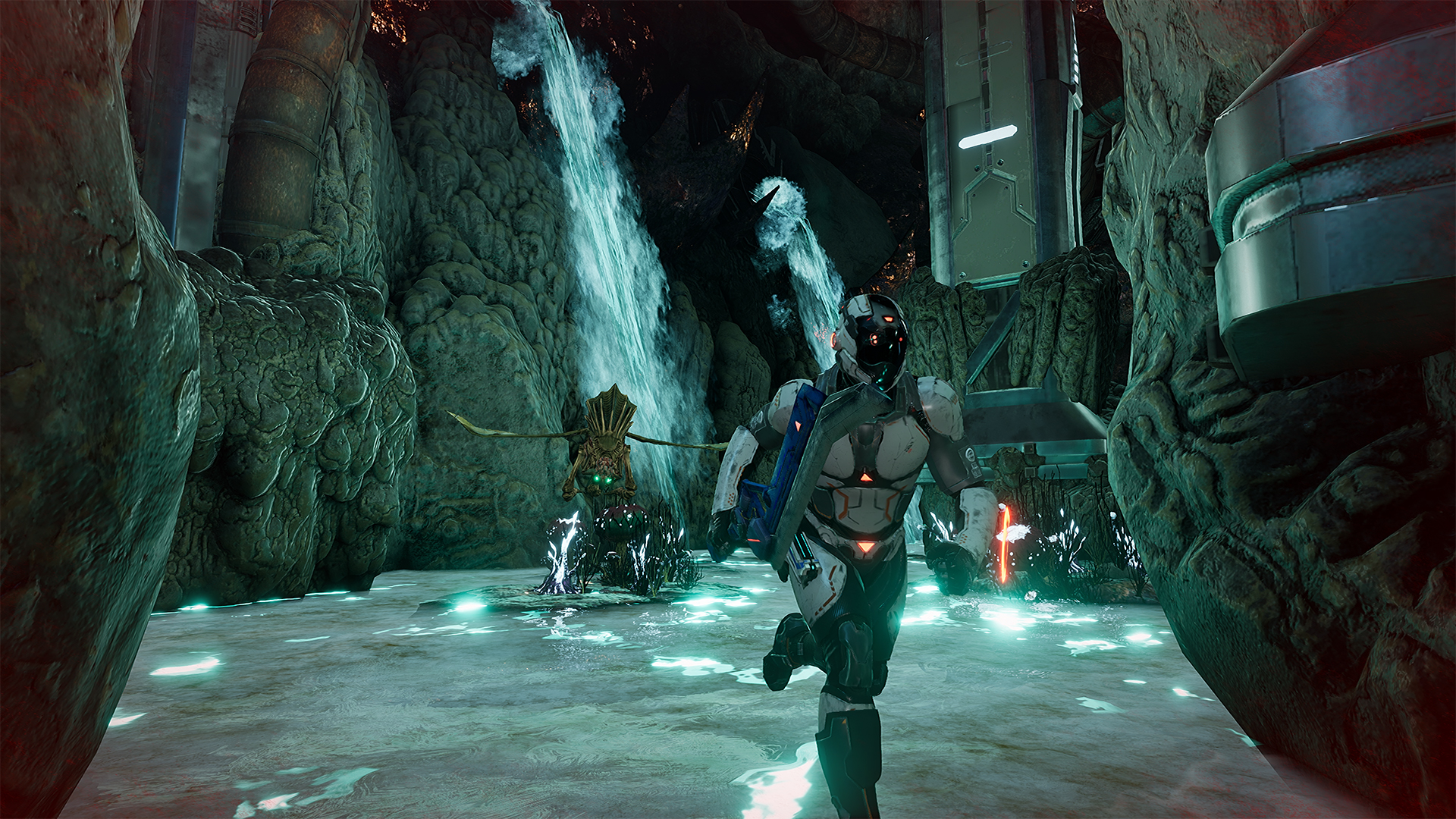 There’s a minor multiplayer aspect to the game. Once a boss has been defeated, Dolmen fragments can be used to resurrect it. You know, so you can farm components. This is also how you summon other players into your game, to stomp some of the abominations you’ll face into the ground. It’s… a fine enough feature, we reckon.
There’s a minor multiplayer aspect to the game. Once a boss has been defeated, Dolmen fragments can be used to resurrect it. You know, so you can farm components. This is also how you summon other players into your game, to stomp some of the abominations you’ll face into the ground. It’s… a fine enough feature, we reckon.
Finally, there’s the ranged combat. We’ve saved this for last because it actually feels… pretty decent. If Dolmen‘s developers had chucked the melee combat and given the ranged weapons more punch, we probably would have enjoyed this one a little more. It still would have been generic — more Dead Space than Dark Souls — but it would have been a blast. Picking off enemies from a distance or panic-shooting the ones that drop out of the shadows in this mostly linear environment would have gone down better. It also would have suited the limited inventory system more. Switching from a company-made axe to a two-handed sword or some Wolverine claws felt… a little weird.
Dolmen verdict
Dolmen is actually a solid effort from a relatively young developer. The mistakes made here could be laid at the door of inexperience, or a lack of budget. But there’s some solid potential behind this mostly-cloned-from-From-Software space RPG. Visual touches, the unique tweaks, the monster design, and other highlights are there. It’s far from perfect, mind, and there are some tedious aspects to overcome. Still, Dolmen will scratch any Soulsborne itch you might have. We do find it impossible to recommend this over, say, Elden Ring. That’s understandable. But we’re also planning on keeping an eye on Massive Work Studio. The Brazilian developer, with another release or two under its belt, looks to be worth paying attention to.

